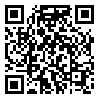Volume 3, Issue 1 (Continuously Updated 2020)
Func Disabil J 2020, 3(1): 61-68 |
Back to browse issues page
Download citation:
BibTeX | RIS | EndNote | Medlars | ProCite | Reference Manager | RefWorks
Send citation to:



BibTeX | RIS | EndNote | Medlars | ProCite | Reference Manager | RefWorks
Send citation to:
Dayyani R, Jafarzadehpur E, Salouti R, Mirzajani A. Estimation of Final Cylindrical Spectacle Correction by Pentacam. Func Disabil J 2020; 3 (1) :61-68
URL: http://fdj.iums.ac.ir/article-1-128-en.html
URL: http://fdj.iums.ac.ir/article-1-128-en.html
1- Department of Optometry, School of Rehabilitation Sciences, Iran University of Medical Sciences, Tehran, Iran.
2- Department of Optometry, Iran University of Medical Sciences, Tehran, Iran ,jafarzadehpour.e@iums.ac.ir
3- Department of Ophthalmology, Poostchi Ophthalmology Research Center, Shiraz University of Medical Sciences, Shiraz, Iran.
4- Department of Optometry, Iran University of Medical Sciences, Tehran, Iran
2- Department of Optometry, Iran University of Medical Sciences, Tehran, Iran ,
3- Department of Ophthalmology, Poostchi Ophthalmology Research Center, Shiraz University of Medical Sciences, Shiraz, Iran.
4- Department of Optometry, Iran University of Medical Sciences, Tehran, Iran
Abstract: (2302 Views)
Background and Objectives: Keratoconus is a non-inflammatory asymmetric corneal degenerative disease characterized by the steepening and distortion of the cornea. In this disease, irregular astigmatism makes the subjective refraction difficult. Using the Pentacam, we aimed to determine the corrective astigmatism of the spectacle.
Methods: The subjective refraction and Pentacam imaging were performed for 317 keratoconic patients who referred to the Salouti Eye Clinic, Shiraz, Iran. Then, the astigmatism values obtained with subjective refraction were compared with the values of anterior and posterior corneal surface astigmatism obtained with the Pentacam imaging.
Results: The mean age of 317 keratoconic patients was 29.81 years (range: 15 to 45 years). The minimum, maximum, and average astigmatism of the corneal front surface were 0.3, 16.8, and 3.21 diopters, respectively. Also, the minimum, maximum, and average astigmatism of the corneal back surface were 0, 2.8, and 0.67 diopters, respectively. Moreover, the P value was lower than 0.001 in the regression analysis of the subjective refraction for both the power and axis of the cylinder.
Conclusion: The regression formulas obtained in this study can accurately (with a probability of 99%) predict refractive astigmatism, using corneal astigmatism.
Methods: The subjective refraction and Pentacam imaging were performed for 317 keratoconic patients who referred to the Salouti Eye Clinic, Shiraz, Iran. Then, the astigmatism values obtained with subjective refraction were compared with the values of anterior and posterior corneal surface astigmatism obtained with the Pentacam imaging.
Results: The mean age of 317 keratoconic patients was 29.81 years (range: 15 to 45 years). The minimum, maximum, and average astigmatism of the corneal front surface were 0.3, 16.8, and 3.21 diopters, respectively. Also, the minimum, maximum, and average astigmatism of the corneal back surface were 0, 2.8, and 0.67 diopters, respectively. Moreover, the P value was lower than 0.001 in the regression analysis of the subjective refraction for both the power and axis of the cylinder.
Conclusion: The regression formulas obtained in this study can accurately (with a probability of 99%) predict refractive astigmatism, using corneal astigmatism.
Type of Study: Research |
Subject:
Optometry
Received: 2020/08/2 | Accepted: 2020/10/15 | Published: 2020/12/30
Received: 2020/08/2 | Accepted: 2020/10/15 | Published: 2020/12/30








